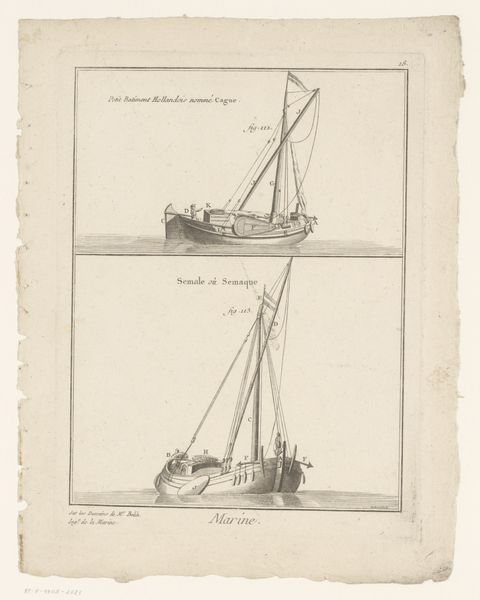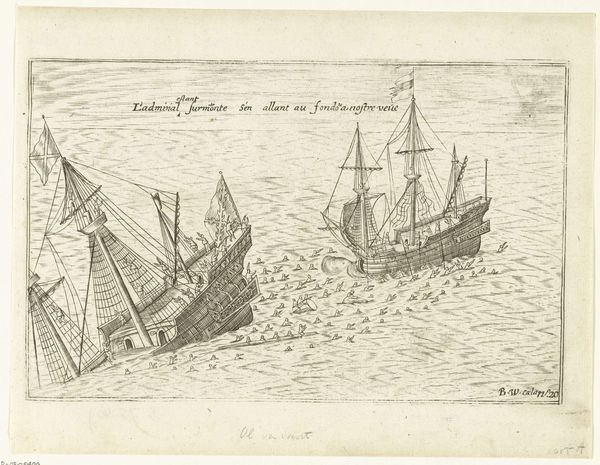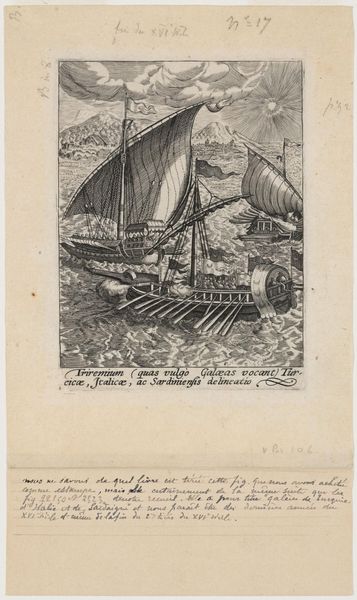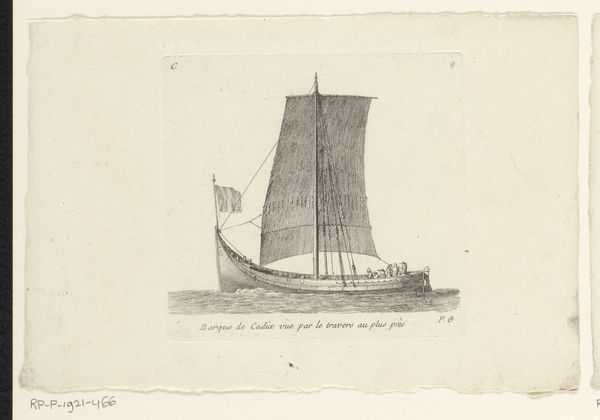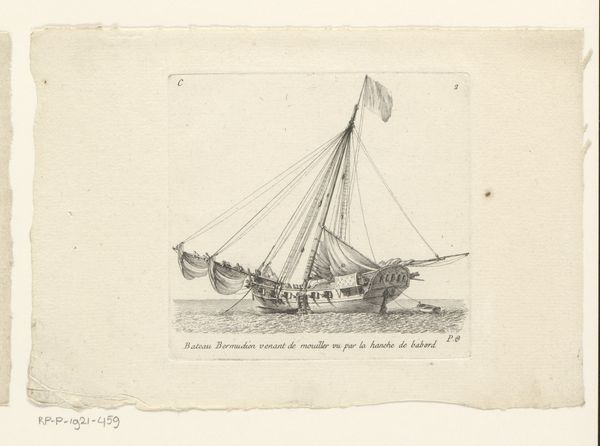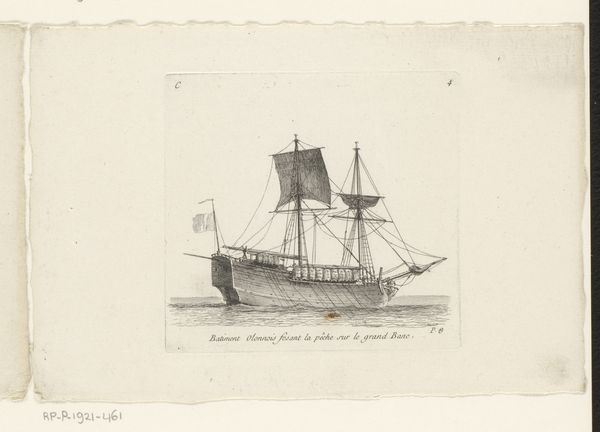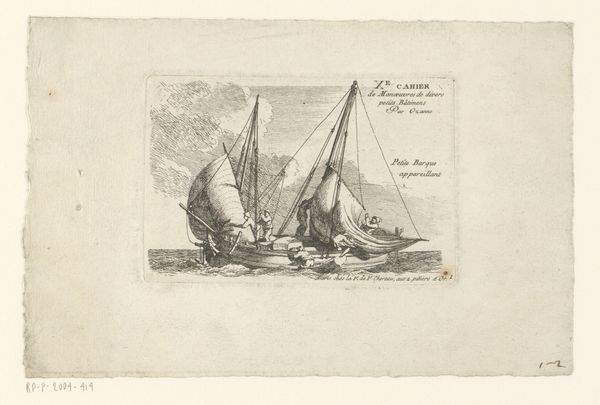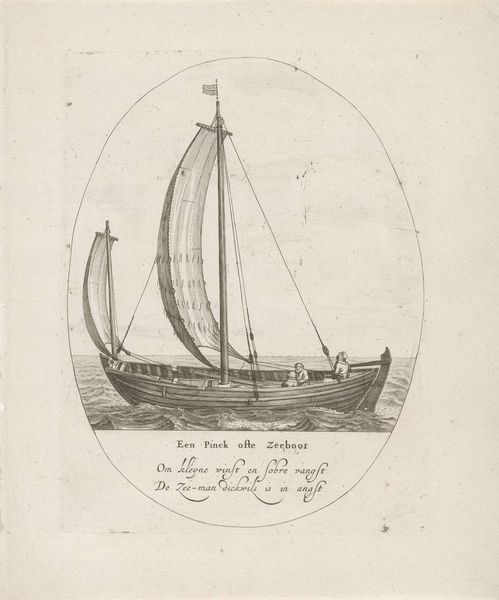
drawing, print, engraving
#
drawing
#
dutch-golden-age
# print
#
landscape
#
cityscape
#
engraving
Dimensions: height 229 mm, width 172 mm
Copyright: Rijks Museum: Open Domain
Curator: This print, "Twee marineschepen," which translates to "Two Marine Vessels," is attributed to Lachaussée and dates from around 1700 to 1750. It’s an engraving, likely intended for technical reference. Editor: It's striking how static and diagrammatic the scene feels. It's not so much a depiction of a lived, maritime moment but a plan, or template. Almost like instructions! Curator: Exactly! And thinking about it materially, this kind of print was relatively reproducible, easy to transport. You can imagine shipbuilders or even navigators using it. These vessels facilitated burgeoning global trade networks of the time. It's not a coincidence it was made during the Dutch Golden Age! Editor: The Golden Age was, after all, largely fueled by that naval prowess. The ships were instrumental tools in extending the Dutch Empire’s reach and enforcing its economic policies. You can almost trace lines of power through these lines in the image, between the materials, the craftsmen who build, the naval command, and the politicians at shore! Curator: What's particularly interesting is that the image's labeling specifies particular innovations by Dutch shipbuilders to navigate along the coasts of what the French refer to as “leurs Canana,” now part of the Atlantic coast of Africa. It speaks volumes to how European nations were constantly innovating their modes of transport at the expense of the rest of the world. Editor: True. But also notice how utilitarian it is, with a very functional aim. Its availability would've helped circulate technological knowledge across geographical and professional boundaries—potentially shifting away from tightly guarded guilds to new structures and new patterns of making in wider networks. Curator: Absolutely. The function within social practices informs all modes of consumption! This reminds me again of that transition to broader participation as information circulated outside limited elites and toward much larger social pools during this early modern period of intense and complex historical transformation. Editor: In the end, this engraving reveals not just the lines of a ship but those of colonial ambition, technological exchange, and nascent globalization itself! Curator: An object lesson printed in monochrome.
Comments
No comments
Be the first to comment and join the conversation on the ultimate creative platform.
